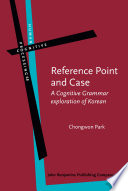
Reference Point and Case PDF
264 Pages·2019·4.9046 MB·other
Most books are stored in the elastic cloud where traffic is expensive. For this reason, we have a limit on daily download.
Preview Reference Point and Case
Description:
This monograph answers the rarely discussed questions of why complicated grammatical case phenomena exist in Korean and what the connection is between the case forms and their functions. The author argues that the case forms in Korean reflect patterns of the human cognitive process. While this approach may seem rather obvious to non-linguists, it is indeed a novel claim in contemporary linguistic theory. In order to provide technical analyses of Korean case phenomena such as multiple nominative/accusative, non-nominative subject, and adverbial case constructions, this book adopts an independently established descriptive construct known as reference point in the framework of Cognitive Grammar. The author demonstrates that the notion of reference point not only explains a substantially wider set of data, but also leads to a more reasonable generalization. The intended readership of this book are researchers who are interested in case phenomena, irrespective of their theoretical orientation.
See more
The list of books you might like
Most books are stored in the elastic cloud where traffic is expensive. For this reason, we have a limit on daily download.
